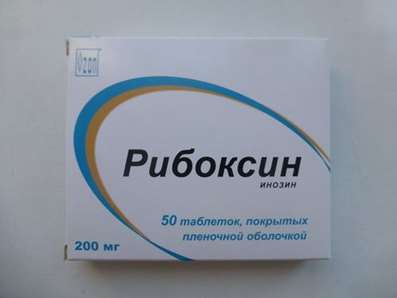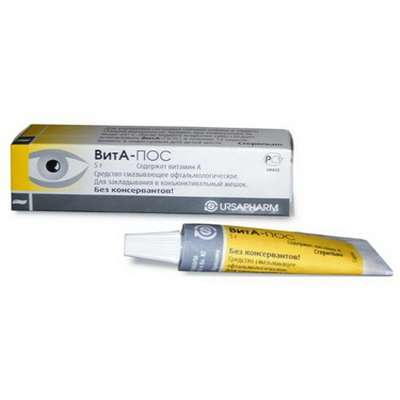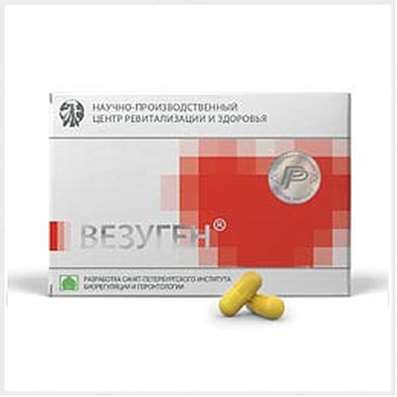The language of chemistry: alcohols
21 Oct 2016
An excerpt from the book about the etymology of the names of alcohol, use of alcohol in the perfume and poison, poisoned Socrates (history of chemistry, the meaning and origin of known terms of chemical names.)
Alcohols
Trivial names alcohols (like systematic name) generally end in "ol". But there are exceptions, due to historical reasons: glycerol, cholesterol, sorbitol ... The English names for alcohols usually no exceptions (glycerol, cholesterol, sorbitol). Unfortunately, in recent years, in newspapers, magazines, on the labels of products, and so on. N. There is not regulated by any rules and dictionaries tracings from English such as "cholesterol", "glycerol", the already mentioned "ester", if not "benzene »(benzene),« chlorin »(chlorine),« hydrocarbyl »(hydrocarbons), etc., instead of the" benzene "," chloro "," hydrocarbons "-.. the words which are known to people and very far from the chemistry. Uninformed people may even think that the glycerol and glycerol, cholesterol and cholesterol - different substances. (From the advertisement: "glycerin or glycerol is often included in the composition of deodorants.") However, Article 5-volume Encyclopedia of Chemical called "cholesterol" and "cholesterol" is not even mentioned. The spelling dictionary also contains the word "cholesterol" and not "cholesterol".
Aliphatic alcohols old name - carbinols, carbinol and - the same as that of methanol, methanol. Carbin German chemist Kolbe called a methyl radical. Now carbyne called one of the allotropic forms of carbon (a chain of alternating single and triple bonds).
Names saturated alcohols (alkanols) with short chains are usually made from the names of the corresponding alkanes. But there are exceptions. Pentyl alcohol often called amyl; Greek amylon - "starch" (negative particle and a mylos - "mill", ie literally "unground"). Once isoamyl alcohol (3-methylbutanol-1) called "amyl alcohol fermentation", since it constitutes the basis of fusel oil, which is produced by fermentation of various substances, including obtained by hydrolysis of starch - polysaccharide (S6N10O5) n. From the same root - the name of the alkene amylene. The word of German origin starch: Kraftmehl - "starch flour" (Kraft - "force", Mehl - "flour"). From amyl occurs and the name of one of the factions of starch - amylose. The other faction is called amylopectin. In Greek pektos - "jelly"; pectins are called natural carbohydrates (many of them in the berries and fruits) with jelly character and used for the manufacture of jelly. When complete hydrolysis of starch, glucose is formed. Particularly rapid hydrolysis by the enzyme goes saliva ptyalin (Greek ptyalon -. "Saliva"). That is why in his mouth a piece of black bread quickly becomes sweet.
Tertiary chloro-tri-butanol is the common name hloreton because it was synthesized from chloroform and acetone. Accordingly, brometon was prepared from acetone and bromoform.
Long-chain alkanols are usually trivial names, produced from natural sources. From cetane does the name S16N33ON cetyl alcohol, which is contained in the spermaceti, is extracted from the sperm whale's head. From beeswax (lat. Cera) allocated S26N53ON ceryl alcohol and alcohol myricyl S30N61ON. The last name comes from the Latin. Myrica - a genus of plants to which it belongs, such as Myrica gale. The wax covering the fruit of some species have been used in the past for making candles. In 1875, the famous German chemist Carl Theodore Liebermann (1842-1914) isolated from cochineal wax, which he called koktserilom (probably from Fr. cochenille -. "Cochineal" and the Latin cera -. "Wax"). From wax he singled koktserilovy koktserilovuyu alcohol and acid.
Some higher alcohols named for the corresponding carboxylic acid: caprylic alcohol, lauryl alcohol, myristyl alcohol, stearyl alcohol, etc., dihydric alcohols, glycerol product substitution of hydrogen atom at the terminal group OH octadecyl radical called Batyl alcohol... It is used for the prevention of radiation injuries, and the name is received because of what was found in the fish species Batis (belongs to this kind of common skate).
Trivial names are often used for unsaturated alcohols. So, the name of the simplest alcohol with an acetylene bond - propargyl NS≡S-CH2OH - is derived from the three-carbon radical (cutting) and, as it is surprising at first glance, from the Greek. argyros - "silver". But the fact that the propargyl radical movable hydrogen atom at the triple bond is able to be replaced by silver ions. This fact, and immortalized in the title of propargyl derivatives the same KT Lieberman in 1865.
Unsaturated alcohols geraniol name speaks for itself (it is contained in geranium oil, although it has the smell of roses), and the name of its isomer, linalool (it has the smell of lily of the valley) is derived from the Spanish lináloe - "aloe". Both isomers were used in perfumery. Dextrorotatory stereoisomer linalool koriandrolom also called because it is contained in coriander oil. It speaks for itself and the name derived from castor triinovogo alcohol CH3 (S≡S) 3SN (OH) C2H5, in which three acetylene molecule ( "John") connection.
Geksadetsenola acetyl derivatives (synthetic pheromone) was named dzhiplur - from the English. gyplure, formed by cutting the words gypsy moth lure - "bait for the gypsy moth."
When restoring citronellal (3,7-dimethyl-6-oktenalya) citronellol formed - mixture of unsaturated alcohols differing position of the double bond. Laevorotatory isomer found in rose oil and so called rodinola (from the Greek rhodon -. "Rose"). In the oil of bitter orange flowers (neroli oil, it also flerdoranzhevoe oil) together with linalool and geraniol also contains geraniol stereoisomer - nerol. His name, like the name of Neroli, comes from the name of Italian Flavia Orsini duchess, princess Neroli (Neroli - the area near Rome), who lived in the XVI century and brought into fashion perfume on the basis of this oil.
One of the most famous among entomologists unsaturated alcohols - bombykol (geksadekadien-10,12-ol-1). It serves for the pheromone of the silkworm (Bombyx mori). Sensitivity of males to pheromone of insects is that they capture it in the air at a concentration of 10-17 g / ml!
Sinister reputation has Cicuta virosa root tincture, which is believed to have been poisoned Socrates (more likely that it was Conium maculatum - hemlock). The active principle hemlock - tsikutotoksin unsaturated dihydric alcohol with three double and two triple bonds, whose chemical name is matched properties: geptadeka trans-8,10,12-triene-4,6-diyne-1,14-diol. Generally toxins commonly called poison protein origin and etymology of the word toxin explain, producing it from the Greek. toxikon and translates as "poison". However, this word more interesting story. The word comes from the toxikon toxon - "Bow" (for shooting); toxikon pharmakon - "poison arrows", and pharmakon - is "a drug, a medicine." So initially it toxikon - is "a poison for arrows dipping into it." In ancient Greek myths are many references to the use of poisoned weapons, including arrows. Heracles soaked arrows with poison Lernaean hydra; Odysseus, the famous archer, used for their arrows sap of poisonous plants. And he was killed by a poisoned spear. Poisoned arrows of Philoctetes was mortally wounded, and Paris ...
Colourless crystals cyclic alcohol menthol (2-isopropyl-5-methylcyclohexanol) were isolated from peppermint oil (genus Mentha) back in 1774 year. Now synthetic menthol is used in food, perfumery and pharmaceutical industries. The polyunsaturated alcohol retinol (aka Vitamin A1) is required for normal growth; it also plays an important role in the photosensitivity of the retina, hence - its name: on the retina Latin - "grid". Retinol deficiency may lead, inter alia, the so-called xerophthalmia - dryness of the cornea and conjunctiva. It also called retinol - akseroftol, from the Greek. xeros - "dry" and ophthalmos - "eyes".
It is widely known not only to chemists alcohol cholesterol was first isolated from gallstones; "Bile" in Greek chole (and stereos - "hard"). Hence, the B vitamin - choline, and cholic acid (food additive E1000), and a transmitter of nerve impulses acetylcholine, and hydrolyzing its enzyme cholinesterase (from the English ester -. "Ester") and cholecystitis (Greek kystis -. " bubble ") and even cholera, which is characterized by secretion of bile.
The simplest alcohol with two -OH groups (such dihydric alcohols called) - OH is ethylene glycol-CH2-OH, which indicates the name derived from ethylene, and on sweet taste (although toxic ethylene glycol). Glycol ethers of general formula ROCH2CH2OH widely used as solvents, cellulose acetates and nitrates; hence their trade name cellosolve (from the English cellulose -. "cellulose" and solvent - "solvent").
.. Dimethyl ethers of mono-, di-, tri-, etc. glycols called glyme: SN3OS2N4OSN3 monoglyme, diglyme CH3O (C2H4O) 2SN3 etc. English name obtained from glyme abbreviated words glycol dimethyl ether - «glycol dimethyl ether.".. Accordingly, the initial term "glycol» (glycol) was obtained in a similar manner from the words "glycerol» (glycerol) and "alcohol» (alcohol).
Dihydric alcohols, in which two adjacent OH groups are at the tertiary carbons are called pinacol; simple pinacol (2,3-dimethyl-2,3-butane-diol) is crystallized from an aqueous solution in the form of characteristic plaques, which gave it its name (from the Greek pinax -. "plaque, plaque"). All students studying organic chemistry, know (or at least heard of) about pinacol rearrangement; during its pinacol formed from ketone pinacolone (CH3) 3C-CO-CH3. The corresponding hydroxyl derivative called pinakolinovym alcohol.
To avoid destroying action of Alcohol use Meldonium or Phenotropil.
All polyols have a sweet taste (which is reflected, as already mentioned, in the name of their ancestor - glycerin). Chetyrehatomny butantetraol alcohol called erythritol. When boiling erythritol with concentrated formic acid, it is reduced to 1,3-butadiene, which therefore has the common name of Eritrea. Better known pentaerythritol C (CH 2 OH) 4, used for the production of polymers (polyesters) and explosive pentrita C (SN2ONO2) 4. These molecules five carbon atoms, hence "penta". A trivalent ketonospirt butanetriol-1,3,4-he called erythrulose. In Greek erythros - "red", but erythritol colorless. What's the matter?
Erythritol was produced by the decomposition of erythrite - substances formed by the action of alkalis on many lichens and algae. Erythrite - ester orsellinovoy erythritol and (2,4-dihydroxy-6-methylbenzoic acid). This acid was obtained by hydrolysis lecanoric (diorsellinovoy) acid, which was extracted with ether lichen archill (French is called orseille). Three orsellinovoy acid related molecules give gyrophoric acid, which was isolated from the edible lichen Gyrophora nustata, growing on rocks in Japan. Lecanoric acid (and many other derivatives of benzoic acid) to give ferric chloride in alcoholic solution characteristic dark purple color. Yes, and erythrite when oxidized forms a substance in red. That's where there was "Eritrea". This root is found in many terms, such as the hormone erythropoietin title, which controls the production of red blood cells ( "poet", from the Greek. Poiesis, meaning "education production").
All this history with erythritol would hardly make sense to dig, if not prefixes erythro and threo, which are widely used in organic chemistry to denote diastereoisomers with two asymmetric carbon atoms, and in the same spatial arrangement around their deputies, in the isomeric sugars threose and erythrose (S4N8O4). Erythrose is formed by the oxidation of erythritol, and although it is also colorless, root "Erythritol" it was. But the etymology of the names to look for the second isomer threose (it is the same root as the essential amino acid threonine), it is useless: the word is (. English threose) formed by permutation of letters in the word erythrose (without the letters y and r). These prefixes are used in macromolecular chemistry to denote the threo and erythro configuration of polymer chains. And last of threose: when its restoration is formed chetyrehatomny alcohol threitol.
One of the derivatives of trihydric alcohol cyclohexanetriol called filitsinovoy acid. It is contained in the fern, hence the name of her (Latin for "fern" - filix).
Of the five-atom alcohols are most known stereoisomeric arabitol and xylitol (the latter is familiar to diabetics as a sugar substitute in dietary products - food additive E967). And the Arabs, and the corresponding acid arabonovaya HOCH2 (CHOH) 3SOON have their name from gum arabic (lat. gummi - "gum", arabicus - "Arabian") - a resinous release of some species of acacia, which kogda-to adhesive stamps on the envelopes. Xylitol (it is also used as a dietary food) is prepared by reducing the corresponding aldegidospirta xylose, which is extracted from the low-value agricultural products: corn stalks, cotton hulls, sunflower husks, as well as hardwood. So it is not surprising that the root KSIL (o) (from the Greek xylon -. "Wood") appears not only in the name of these substances (and xylulose, xylidine, xylenes, xylans, xylenols, ksilohinona, etc...), But and the word "block printing" (engraving on wood), as well as the title of a musical instrument xylophone. Oxidation of terminal groups to carboxylic xylitol gives ksilarovuyu dibasic acid. Naturally occurring adonitol another five-atom alcohol obtained from a plant of the family Ranunculaceae Adonis vernalis. A five-atom cyclic alcohol contained in kvertsit oak juice (lat. Quercus).
From hexahydric alcohols often have to deal with sorbitol, mannitol, dulcitol, iditol. Oh, we have already said dulcitol. Sorbitol has been isolated from the berries of mountain ash (Latin sorbus.); the same root in the title of one of the best preservatives - sorbic (2,4-hexadiene) acid, which also contains a lactone rowan berries. When recovering sorbic acid with lithium aluminum hydride in a high yield is obtained sorbitol. Mannitol alcohol extracted from the "manna" (Latin manna - "manna from heaven."); is the name of the dried juice of sycamore and ash, growing in Sicily and in the South Caucasus. Idit name is derived from the Latin. idem - "the same"; these alcohols are the same gross-formula.
In almost all tissues of animals and many plants are cyclic hexahydroxyalcohols inositol (from the Greek is, sort of pad inos -... "Muscle fiber"). Inositol may exist in eight different cis-trans-isomers (one of them has two optical antipode). Each inositol has its own prefix; except for the cis and trans, it is epi (Greek epi -. "on, over, beyond"), allo (Greek allos -. "the other"), neo (. Greek neos - "new")., myo (Greek mys, race . deaths myos - "muscle"), muko (Latin mucus -. "slime"), Hiro (Greek cheir -. "hand"), Scilla (Greek Skilla, Latin squill -.. "squill"). For myosin - the main muscle protein, together with actin, which is formed from the Latin name. actus - "movement, action." The prefix "muko" found in the names such as the already mentioned muconic acid, and the peptidoglycan, mucolytics and mucopolysaccharides. Finally, stsillirozid - glycoside used for rodent control, contained in a red sea onion.
Isomers kvertsita mentioned above have prefixes, similar to those used for inositol, as well as their "talo" (from talose), "Gala" (from galactose) and "Vibo". Vibo kvertsit contained in Kalina lavrolistnoy (Viburnum tinus); by its Latin name, probably took this prefix.
Ether meso-inositol (a natural isomer of inositol) and phosphoric acid is a familiar name to many phytin. This substance with the properties of the vitamin, is extracted from the pomace of different seeds, mainly cannabis, and the name comes from the Greek. phyton - "plant". The drug phytin - a complex mixture of calcium and magnesium salts of different acids inozitfosfornyh. It is used for diseases associated with deficiency of phosphorus in the body.
The oxidation mezoinozita formed one of the isomers of the mucous acid - dibasic carboxylic acid with five hydroxyl groups, dubbed taloslizevoy acid (the first part of the name - from monosaccharide talose). The oxidation of inositol is also formed 5,6-dihydroxycyclohexyl-5-tetraone or rodizonovaya acid, orange-red color (hence the name, from the Greek rhodizein -. "Paint in the color red rose"). Monomethyl ether, inositol called pinitom (the Latin name for sugar pine Pinus lambertiana), bornezitom (was isolated from rubber Borneo) and kvebrahitom (from the name of the tree quebracho, which is derived from the Spanish Quiebra hacha, literally - "breaks ax":. The wood of this tree very hard). From the dried autumn leaves tulip tree (Liriodendron tulipifera) has been allocated 1,4-dimethyl ether, inositol, which received a "lyrical" liriodendrit name.
Finally - about thioalcohols (thiols) of the general formula R-SH, in which the oxygen atom is replaced by a sulfur atom. Thioalcohols often called mercaptans. Mercaptans easy to give the salt (mercaptides) with heavy metals, especially mercury, hence their name from the Latin. mercurium captans - "trapping, binding mercury."

 Cart
Cart





